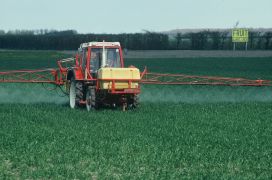Differences
This shows you the differences between two versions of the page.
| Both sides previous revisionPrevious revision | Next revisionBoth sides next revision | ||
| capri:concept:supply [2011/04/11 08:43] – 131.220.212.14 | capri:concept:supply [2011/10/04 06:07] – external edit 127.0.0.1 | ||
|---|---|---|---|
| Line 1: | Line 1: | ||
| + | < | ||
| + | |||
| + | < | ||
| + | |||
| + | |||
| + | |||
| + | < | ||
| + | |||
| + | |||
| + | |||
| + | |||
| + | |||
| + | |||
| + | |||
| + | < | ||
| + | |||
| + | |||
| + | |||
| + | < | ||
| + | |||
| + | |||
| + | |||
| + | < | ||
| + | |||
| + | <a href=" | ||
| + | |||
| + | |||
| + | |||
| + | < | ||
| + | |||
| + | | ||
| + | |||
| + | level covering EU27, Norway, Western Balkans and Turkey) or about 1843 farm type models for EU25 (the remaining regions | ||
| + | |||
| + | | ||
| + | |||
| + | Each independent model maximises regional agricultural income | ||
| + | |||
| + | at given prices and subsidies, subject to constraints on land, policy | ||
| + | |||
| + | | ||
| + | |||
| + | |||
| + | |||
| + | |||
| + | |||
| + | < | ||
| + | |||
| + | | ||
| + | |||
| + | | ||
| + | |||
| + | | ||
| + | |||
| + | |||
| + | |||
| + | < | ||
| + | |||
| + | as equality constraints, | ||
| + | |||
| + | | ||
| + | |||
| + | by chosing a cost minimal feed mix based on 10 types of feedingstuff, | ||
| + | |||
| + | which comprise 5 types of non-marketable fodder and 5 types of concentrates. | ||
| + | |||
| + | The mix is further steered by minimum and maximum bounds for the feedingstuff | ||
| + | |||
| + | and a quadratic cost function depending on the feed input coefficients | ||
| + | |||
| + | which allows for interior solutions and a smooth response to price changes.</ | ||
| + | |||
| + | |||
| + | |||
| + | < | ||
| + | |||
| + | for endogenous yield adjustments. Yields and yield depending inpust are also | ||
| + | |||
| + | | ||
| + | |||
| + | |||
| + | |||
| + | < | ||
| + | |||
| + | | ||
| + | |||
| + | | ||
| + | |||
| + | and arable land was added. Before, grass land and arable land were two fixed endowment.</ | ||
| + | |||
| + | |||
| + | |||
| + | |||
| + | |||
| + | < | ||
| + | |||
| + | are structurally identically, | ||
| + | |||
| + | and differences between the regions are expressed in parameters. That allows | ||
| + | |||
| + | an efficient uniform handling of the models and their results.</ | ||
| + | |||
| + | |||
| + | |||
| + | |||
| + | |||
| + | < | ||
| + | |||
| + | |||
| + | |||
| + | < | ||
| + | |||
| + | and the objective function. Given the relatively small number of contraints | ||
| + | |||
| + | | ||
| + | |||
| + | | ||
| + | |||
| + | the quadratic terms of the cost function.</ | ||
| + | |||
| + | |||
| + | |||
| + | < | ||
| + | |||
| + | time series analysis (<A HREF=http:// | ||
| + | |||
| + | or derived from exogenous elasticities. | ||
| + | |||
| + | as a kind of hybrid approach combining features from traditional | ||
| + | |||
| + | | ||
| + | |||
| + | The cost functions' | ||
| + | |||
| + | | ||
| + | |||
| + | | ||
| + | |||
| + | is generated to let the regional models calibrate to a three-year | ||
| + | |||
| + | | ||
| + | |||
| + | | ||
| + | |||
| + | |||
| + | |||
| + | < | ||
| + | |||
| + | |||
| + | |||
| + | < | ||
| + | |||
| + | <A HREF=/ | ||
| + | |||
| + | | ||
| + | |||
| + | the these indicators had been also embedded in constraints | ||
| + | |||
| + | to e.g. allow for modeling a trading scheme for agricultural Green House Gas emissions.</ | ||
| + | |||
| + | |||
| + | |||
| + | < | ||
| + | |||
| + | |||
| + | |||
| + | < | ||
| + | |||
| + | | ||
| + | |||
| + | in the <A HREF=/ | ||
| + | |||
| + | | ||
| + | |||
| + | | ||
| + | |||
| + | |||
| + | |||
| + | < | ||
| + | |||
| + | feed demand equations in the market module are shifted as to match at prices | ||
| + | |||
| + | in the current simulation the response from the regional models. The price | ||
| + | |||
| + | | ||
| + | |||
| + | |||
| + | |||
| + | < | ||
| + | |||
| + | | ||
| + | |||
| + | | ||
| + | |||
| + | | ||
| + | |||
| + | |||
| + | |||
| + | < | ||
| + | |||
| + | |||
| + | |||
| + | < | ||
| + | |||
| + | | ||
| + | |||
| + | to match national statistics, and missing ones are estimated from time series | ||
| + | |||
| + | | ||
| + | |||
| + | with the CAPSIM model by a module called CoCo (Completeness and Consistentency).< | ||
| + | |||
| + | |||
| + | |||
| + | < | ||
| + | |||
| + | per activity and region are estimated as to exhaust the national sectoral | ||
| + | |||
| + | costs shown in the Economic Account for Agriculture, | ||
| + | |||
| + | the Standard Gross Margins published by European Commission. The estimates | ||
| + | |||
| + | are differently derived for feed input coefficients, | ||
| + | |||
| + | | ||
| + | |||
| + | | ||
| + | |||
| + | to define a plausible mix in the base year which exhaust both regional | ||
| + | |||
| + | | ||
| + | |||
| + | in national market balances. Crop specific regional fertilizer application rates | ||
| + | |||
| + | draw on national expert survey on typical fertilization doses, regional organic | ||
| + | |||
| + | | ||
| + | |||
| + | | ||
| + | |||
| + | are used.</ | ||
| + | |||
| + | |||
| + | |||
| + | < | ||
| + | |||
| + | |||
| + | |||
| + | < | ||
| + | |||
| + | <A HREF=http:// | ||
| + | |||
| + | | ||
| + | |||
| + | | ||
| + | |||
| + | a powerful eight-processor machiune in about 8 seconds and the close to 1900 farm type models in 45 seconds.</ | ||
| + | |||
| + | |||
| + | |||
| + | |||
| + | </ | ||
| + | |||
| + | </ | ||
| + | |||
| + | |||
| + | |||
| + | </ | ||
Except where otherwise noted, content on this wiki is licensed under the following license: CC Attribution-Share Alike 4.0 International


